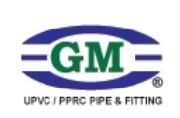GM uPVC pipe and fittings a plumbing and water supply systems because of its durability, corrosion resistance, and affordability. +92-321-2248975
We use these uPVC fittings to connect uPVC pipes and create a network of pipelines for conveying fluids.
Here are some common types of uPVC fittings:
- Couplings: These are used to connect two pieces of uPVC pipes together.
- Elbows: Elbow fittings are designed to change the direction of the uPVC pipe. They come in various angles, such as 45 degrees or 90 degrees.
- Tees: Tees allow the uPVC pipe to split into two directions, forming a T shape.
- Reducers: These fittings are used to connect pipes of different diameters, allowing for a change in size.
- End Caps: End caps are used to seal the end of a uPVC pipe.
- Adapters: Adapters allow for different types of connections, such as threaded or solvent-weld connections.
- Unions: Unions provide a detachable joint in the pipeline, facilitating easy removal or replacement of a section of the pipe.
- Valves: While not strictly fittings, valves are essential components in plumbing systems. uPVC valves, such as ball valves or gate valves, control the flow of fluids in the system.
Manufacturing Standards of GM UPVC Pipe
- ASTM D2466 – Standard Specification for Poly(Vinyl Chloride) (PVC) Plastic Pipe Fittings, Schedule 40: This standard covers the requirements for fabricated fittings intended for use with Schedule 40 pipe.
- ASTM D2467 – Standard Specification for Poly(Vinyl Chloride) (PVC) Plastic Pipe Fittings, Schedule 80: Similar to ASTM D2466, but specific to Schedule 80 pipe.
- ASTM D3311 – Standard Specification for Drain, Waste, and Vent (DWV) Plastic Fittings Patterns: This standard covers patterns and dimensions for DWV fittings.

